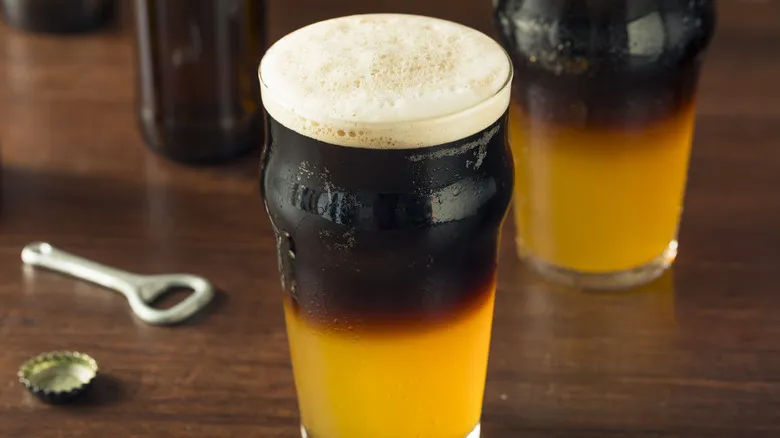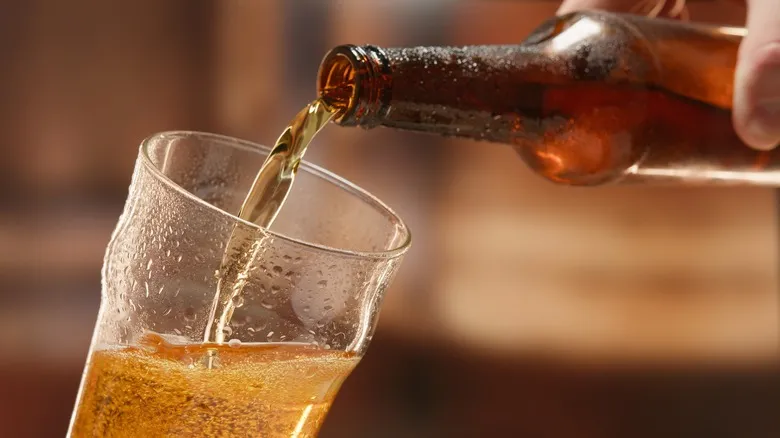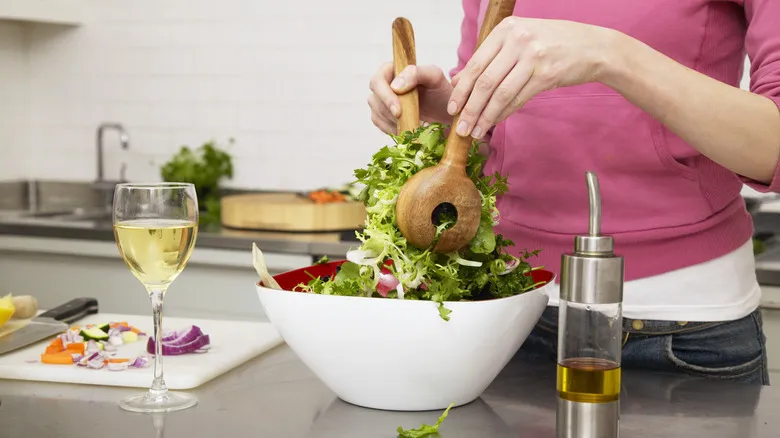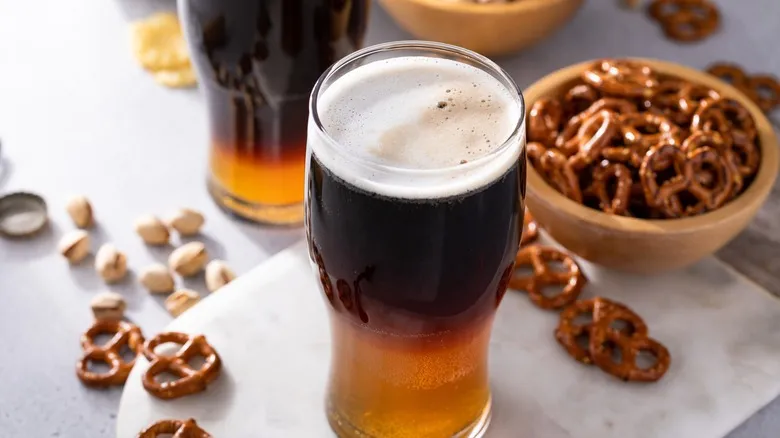How to pour the perfect black and tan

Creating a perfect black and tan often requires some practice. Although Guinness is less dense than Bass, simply pouring one beer over the other can lead to a mix. The secret to achieving the ideal beer cocktail lies in mastering the pouring technique and exercising patience to take advantage of the beers' differing densities.
The first step in layering a black and tan is to focus on how you pour the ale. Typically, people pour beer from a bottle into a glass slowly and along the sides to minimize foam. However, since a taller head of foam aids in layering, you can turn the Bass Ale upside down and let it pour into your pint glass. This method will create a thick, creamy foam layer for the stout to rest upon.
When it comes to pouring the Guinness, patience is essential. You'll need a spoon for this step. A regular spoon works fine, but you might consider getting a specialized black and tan spoon, which has a curved handle designed to balance on the rim of the glass. While these spoons are quite useful, they aren't necessary; you can simply hold a regular spoon with the convex side facing up over the center of the glass. Then, gently pour the Guinness over the back of the spoon. This technique allows the stout to flow smoothly over the ale, preventing them from mixing. Keep practicing until you feel comfortable with the process.
Delicious black and tan variations

Guinness stout and Bass Pale Ale are the classic ingredients for a black and tan, as their densities allow them to stay distinct in the glass. However, don’t hesitate to try out different combinations at home. The most successful pairings typically involve a dark porter or stout layered over a pale ale, since pale ales are generally denser than darker beers.
For example, if you enjoy Left Hand Milk Stout, consider layering it over a pale ale or cider like Blue Moon or Angry Orchard. There are also several standard variations of a black and tan that you can use as a guide—combining Guinness with a pumpkin ale or hard apple cider creates what’s known as a black and orange or black and gold, respectively. You can also swap out Guinness for your favorite coffee or chocolate stout in these mixes.
Chocolate stouts can be particularly delightful when layered over lambic or Belgian-style fruit beers. A popular choice is to float chocolate stout on raspberry lambic, resulting in a black and red. However, cherry or blackcurrant lambics also offer a fragrant fruitiness that complements the rich bitterness of dark stouts beautifully. If you're uncertain about what meal to pair with your beer, aim for dishes with deep flavors and rich fats that can balance the pleasant bitterness of the beer.
Recommended

Keep Champagne Fizzy For Up To 2 Weeks With A Special Stopper

The Best Wines To Sip With Brunch According To The Pros

How Does A Beer Get Skunky?

Why It's Difficult To Pair Salads And Wine
Next up

